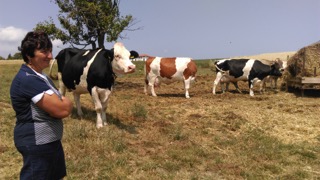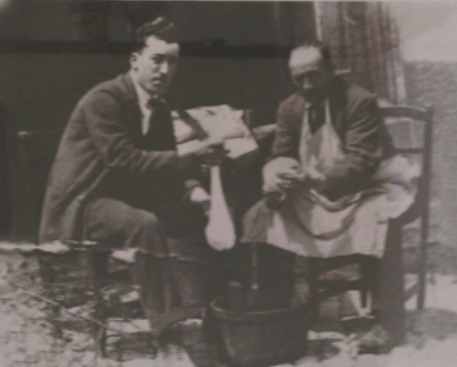Since ancient times, the shepherds of the Apennines have been moving their herds along the traturre, the wide tracks that weave through Abruzzo and Molise, extending more than 250 kilometres down to the plains of Puglia.
This seasonal migration is called la transumanza – which translates as crossing the lands – a constant search for better grazing in the changing seasons.
In the past, the shepherds left their families in late November and often did not return until May, this constant change and movement having a profound effect, not just on the cultural traditions of the region, but on the psychology of its people.
This search for greener pastures, through endless generations, might well be the primary reason that emigration from Molise and Abruzzo during the mass exodus of the early 20th century was highest per capita in all of Italy. These were not by any means her poorest regions – yet they left in their droves, mostly travelling to Argentina and the United States.
Is this ancient tradition of moving constantly, to better one’s conditions, the reason?
Caseificio Di Nucci, Agnone, Alto Molise
In 1662 Leonardo Di Nucci was a shepherd moving his herds along these same traturre, carrying on horseback the copper basins and wooden tubs for the daily production. Using a whey starter and raw milk, the family became master casari and were asked by the Italian government to teach this craft to other young men of the region.
Today, 11 generations later, Franco Di Nucci and his children still use the same methods, avoiding the use of any preservatives or milk enzymes. They do not keep their own herds, asserting that to concentrate on their craft and leave the excellent husbandry of the animals to carefully chosen local dairy farmers gives the finest possible results.
These are indeed cheeses in which you can actually taste the grasses and herbs of the seasons. No two are the same – Franco insists that the flavour of the grasses, the weather and the mood of the cow during milking are just some of the factors affecting the taste and texture.
We were taken around the small factory where the hand-made cheese is formed by a dedicated team of craftsmen. The visit was unforgettable – incredible smells and tastes. Franco is a superb speaker, giving us the family story in slow and very clear Italian and explaining carefully when we got a bit lost.
He is passionate about his family history and the rich artisan culture of this region. The love and attention that is poured into his produce is evident.
Caseificio Di Nucci continues to win international recognition, in 2013 gaining the ‘Supergold’ of the World Cheese Awards. Ricotta, stracciata, scamorza and caciocavallo are the most distinctive cheeses of this region.
Scamorza alla griglia is a typical Agnonese dish, which we always enjoy after a visit to the caseifici.
Author’s Bio: LIVE AND LEARN ITALIAN invites you to combine study with exploring the traditions and everyday life in Molise, mixing with the community and engaging in local activities.
 BrowsingItaly Sharing stories, experiences, photos, tips and all things good on Italy
BrowsingItaly Sharing stories, experiences, photos, tips and all things good on Italy




